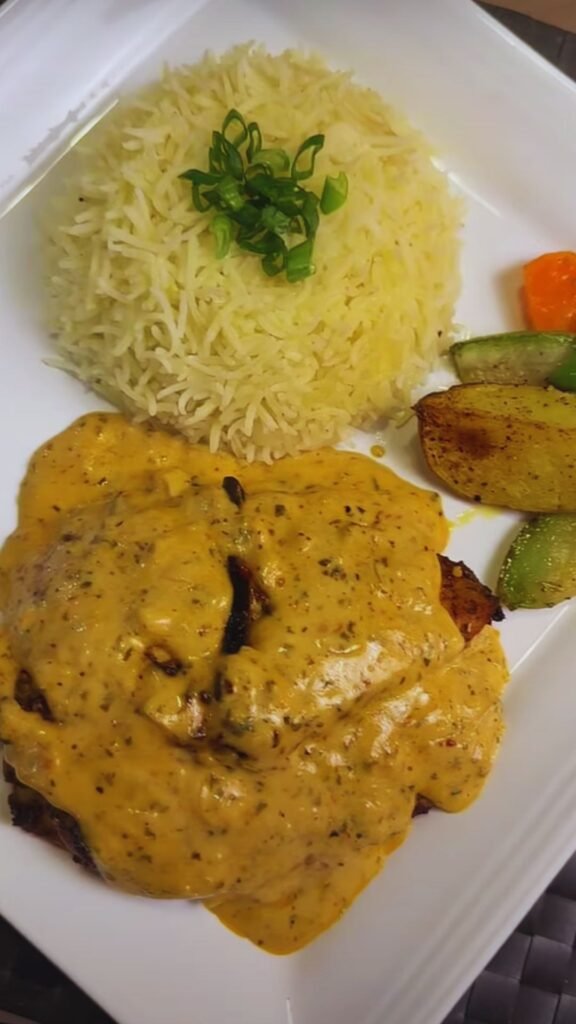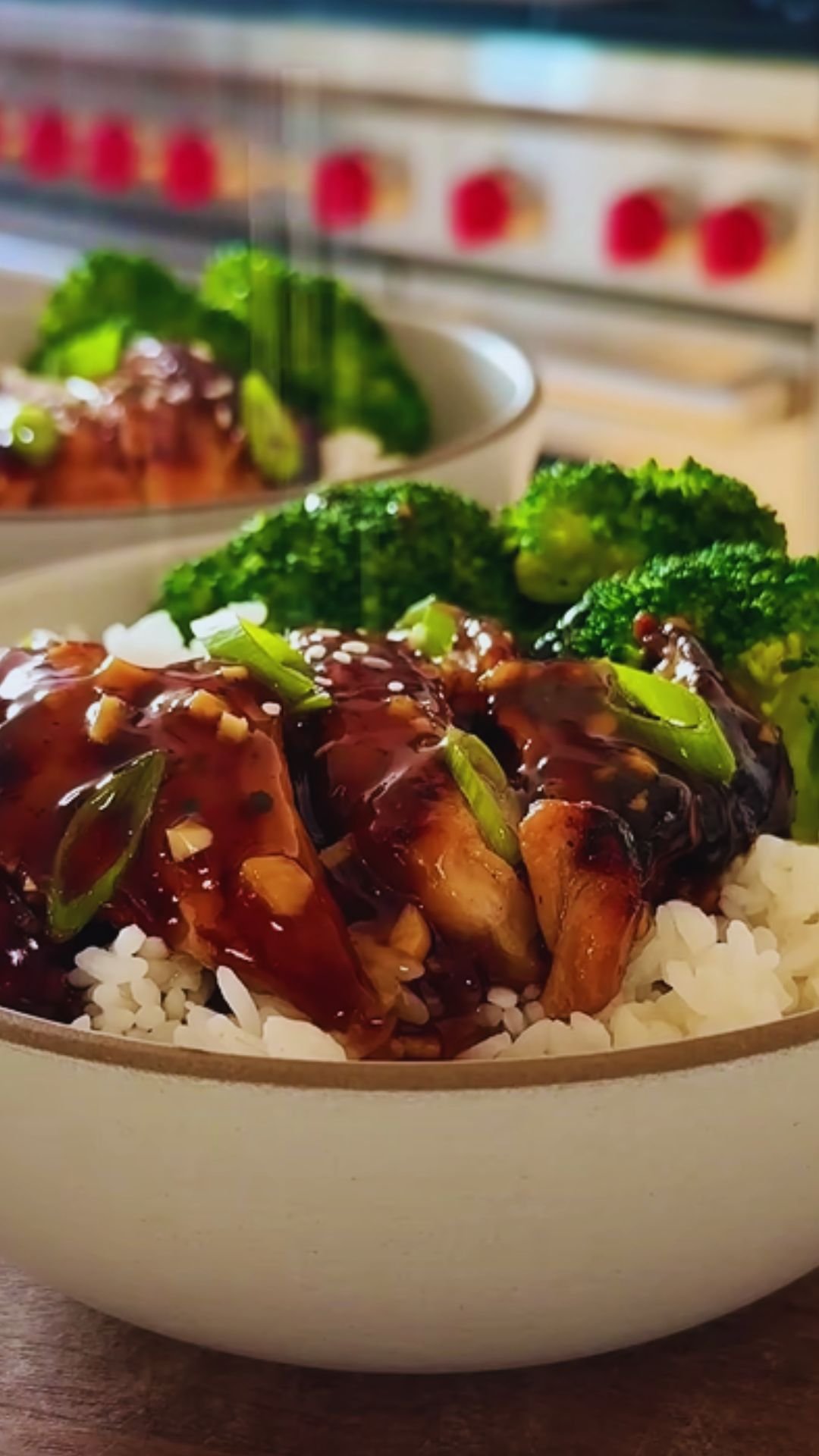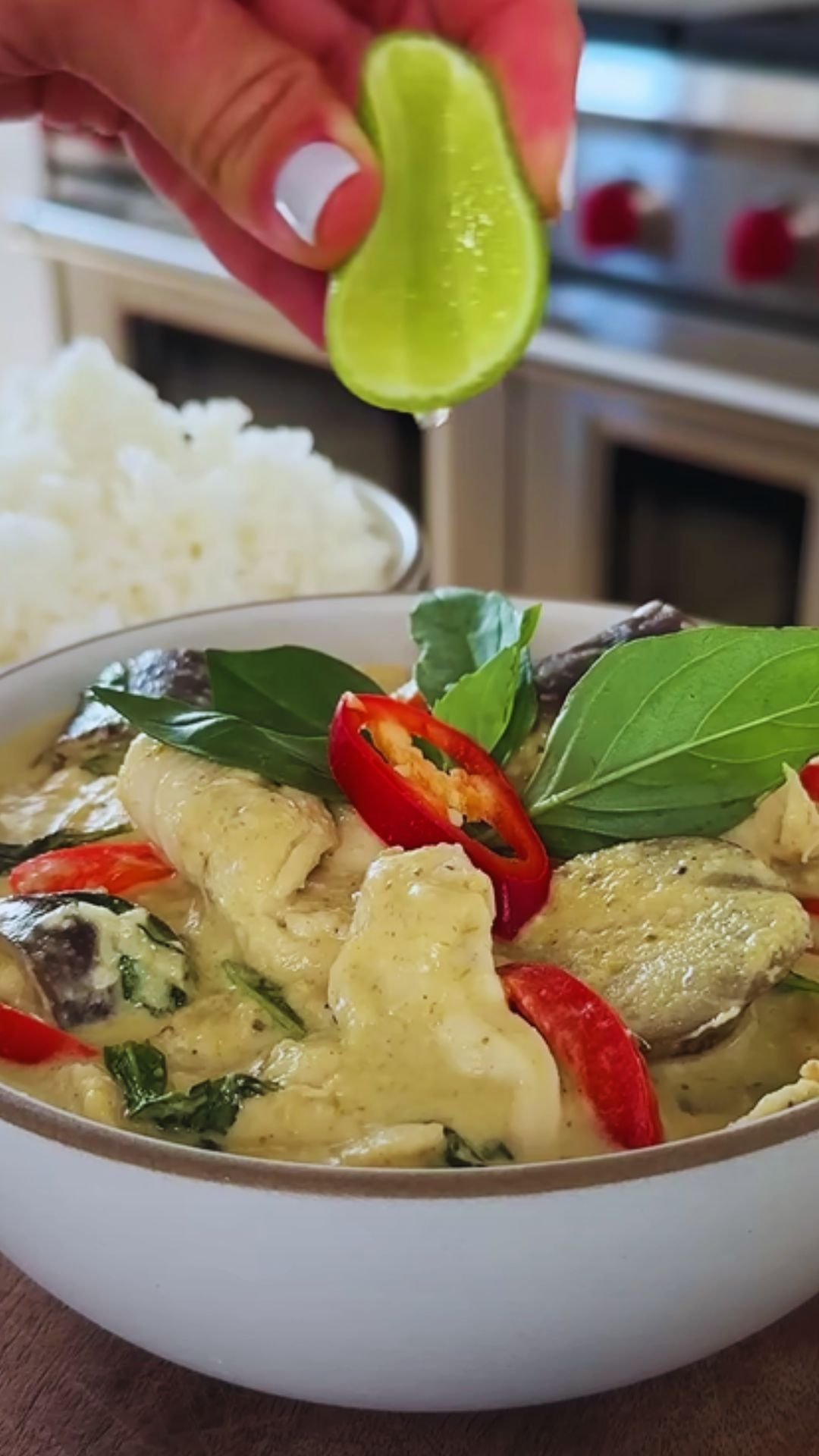Have you ever wanted to transport your taste buds to the vibrant markets of Marrakech without leaving your kitchen? I’ve spent years perfecting my Moroccan chicken recipe, and today I’m sharing all my secrets for creating this aromatic, tender dish that’s bursting with the complex flavors of North African cuisine.
The Magic of Moroccan Flavors
The first time I tasted authentic Moroccan chicken, I was sitting in a small family-owned restaurant in Fez, watching as the waiter ceremoniously removed the conical lid from a clay tagine, releasing a cloud of fragrant steam that carried hints of cinnamon, cumin, and preserved lemon. That moment changed my culinary perspective forever.
Moroccan cuisine is a stunning reflection of the country’s rich history, where Berber, Arabic, Andalusian, and Mediterranean influences blend together in perfect harmony. The way they layer spices and combine sweet and savory elements creates a depth of flavor that’s truly unmatched.
What makes Moroccan chicken special is the careful balance of warming spices, the slow cooking process that allows the meat to become incredibly tender, and the addition of preserved lemons and olives that bring brightness to cut through the richness. And while traditional recipes call for cooking in a clay tagine (the cone-shaped vessel that gives the dish its name), I’ve adapted the technique for modern kitchens without sacrificing any of the flavor.
Essential Moroccan Spices and Ingredients
Before we dive into the recipe, let’s explore the key players that make Moroccan cuisine so distinctive:
Ras el Hanout: This is the crown jewel of Moroccan cooking, a complex spice blend whose name literally means “head of the shop,” implying that it contains the best spices a merchant has to offer.
- Cumin: Earthy and warm, providing the foundational note in many Moroccan dishes
- Cinnamon: Adds subtle sweetness and depth
- Coriander: Offers citrusy, floral notes that brighten heavy dishes
- Turmeric: Provides color and a mild earthiness
- Preserved Lemons: Intensely lemony with a unique fermented quality that’s essential to authentic Moroccan flavor
- Green Olives: Briny and slightly bitter, they cut through rich flavors
- Saffron: The world’s most expensive spice, adding a subtle floral note and golden color

The Ultimate Moroccan Chicken Recipe
This recipe serves 6 people and creates a stunning centerpiece for any dinner party or family meal. The combination of tender chicken, complex spices, and sweet-savory sauce will have everyone asking for seconds.
Ingredients
For the marinade:
- 8 bone-in, skin-on chicken thighs
- 3 tablespoons extra virgin olive oil
- 4 cloves garlic, minced
- 1 tablespoon fresh ginger, grated
- 2 tablespoons ras el hanout
- 1 teaspoon ground cumin
- 1 teaspoon ground coriander
- 1 teaspoon paprika
- ½ teaspoon ground cinnamon
- ½ teaspoon ground turmeric
- ¼ teaspoon cayenne pepper (adjust to taste)
- 1 teaspoon salt
- ½ teaspoon black pepper
- Zest of 1 lemon
For the tagine:
- 2 tablespoons olive oil
- 1 large onion, thinly sliced
- 3 cloves garlic, minced
- 1 tablespoon fresh ginger, grated
- 1 cinnamon stick
- 2 bay leaves
- Pinch of saffron threads, soaked in 2 tablespoons hot water
- 1 cup chicken broth
- 2 tablespoons honey
- 2 preserved lemons, quartered (or 1 fresh lemon, thinly sliced, if preserved is unavailable)
- 1 cup green olives
- ½ cup dried apricots, chopped
- ¼ cup fresh cilantro, chopped
- ¼ cup fresh parsley, chopped
- ¼ cup sliced almonds, toasted
Instructions
- Marinate the chicken: In a large bowl, combine all marinade ingredients and mix well. Add the chicken thighs and massage the marinade into the meat. Cover and refrigerate for at least 4 hours, preferably overnight.
- Prepare for cooking: Remove the chicken from the refrigerator 30 minutes before cooking to bring it to room temperature. Preheat your oven to 350°F (175°C).
- Brown the chicken: Heat 2 tablespoons of olive oil in a large oven-safe Dutch oven or tagine over medium-high heat. Working in batches, place the chicken skin-side down and sear until golden brown, about 5-6 minutes. Flip and cook for another 2-3 minutes. Transfer to a plate and set aside.
- Create the flavor base: In the same pot, add the sliced onions and cook until softened and translucent, about 5 minutes. Add the garlic and ginger, cooking for another minute until fragrant. Stir in the cinnamon stick and bay leaves.
- Combine and simmer: Return the chicken to the pot, skin-side up. Add the saffron with its soaking water, chicken broth, honey, preserved lemons, olives, and dried apricots. Bring to a gentle simmer.
- Slow cook to perfection: Cover the pot with a lid and transfer to the preheated oven. Cook for 45-50 minutes, until the chicken is completely tender and the sauce has thickened slightly.
- Finish and garnish: Remove from the oven and let rest for 10 minutes. Sprinkle with fresh cilantro, parsley, and toasted almonds before serving.

Cooking Notes and Tips
I’ve learned a few tricks over the years that take this dish from good to exceptional:
- Don’t rush the marination: The longer the chicken marinates, the more flavor it absorbs. I often prepare the marinade in the morning before work for dinner that night, or even the night before a weekend gathering.
- Bone-in, skin-on thighs: These give the richest flavor and stay the most moist during the long cooking process. The bones add depth to the sauce, while the skin renders its fat and becomes deliciously crisp when seared properly.
- Layering flavors: Notice how we add spices at different stages—first in the marinade, then when building the sauce. This creates multiple dimensions of flavor.
- Control the heat level: The cayenne pepper can be adjusted based on your preference. I sometimes add a dash of harissa paste for an extra kick.
- The right balance of sweet and savory: The honey, apricots, and cinnamon bring sweetness, while the olives, preserved lemons, and savory spices balance it out. This contrast is key to authentic Moroccan flavor.
Serving Suggestions
In Morocco, tagines are traditionally served family-style, straight from the cooking vessel, with plenty of crusty bread to soak up the flavorful sauce. Here are some wonderful accompaniments that complement the rich flavors of Moroccan chicken:
| Accompaniment | Description | Preparation Time | Difficulty |
|---|---|---|---|
| Couscous | Tiny steamed semolina granules that soak up the delicious sauce | 10 minutes | Easy |
| Moroccan Bread (Khobz) | Slightly sweet, fluffy flatbread perfect for scooping | 2 hours (including rise time) | Medium |
| Moroccan Carrot Salad | Raw carrots marinated with cumin, lemon, and herbs | 15 minutes (plus 1 hour marinating) | Easy |
| Cucumber Yogurt Sauce | Cool and creamy counterpoint to the spiced chicken | 10 minutes | Easy |
| Mint Tea | Traditional sweet mint tea served at the end of the meal | 5 minutes | Easy |
| Roasted Eggplant Dip | Smoky, creamy dip with tahini and garlic | 45 minutes | Medium |
| Tomato and Preserved Lemon Salad | Bright, acidic salad that cuts through rich dishes | 15 minutes | Easy |
For a truly authentic experience, serve the meal in the traditional Moroccan style:
- Begin with small salads and bread
- Present the tagine as the centerpiece
- Finish with fresh fruit and mint tea
And remember, in Morocco, it’s customary to eat with the right hand, using bread to scoop up food instead of utensils (though I won’t judge if you reach for a fork!).

The History Behind the Dish
Moroccan tagine cooking dates back to the 9th century, when the Berber people of North Africa developed this ingenious cooking method as a way to prepare flavorful meals with minimal water in arid regions. The conical shape of the tagine creates a natural condensation cycle—steam rises, collects on the lid, and drips back down, keeping the contents moist with very little added liquid.
What’s fascinating is how Moroccan cuisine has evolved through centuries of cultural exchange. The Arabs introduced spices like cinnamon, ginger, saffron, and cumin during their conquest of North Africa in the 7th century. The Moors brought olives, citrus, and almonds from Andalusia. Later, Ottoman influences added more complexity to the spice palettes.
Even the sweet-savory combinations that are so distinctive in dishes like Moroccan chicken show the influence of Persian cuisine, which often pairs meat with fruit. It’s this beautiful harmony of diverse culinary traditions that makes Moroccan food so special.
Health Benefits of Moroccan Cuisine
Beyond being delicious, this Moroccan chicken dish offers impressive nutritional benefits:
| Ingredient | Health Benefit | Key Nutrients |
|---|---|---|
| Chicken thighs | Excellent source of protein for muscle maintenance | Protein, vitamin B12, zinc |
| Turmeric | Contains curcumin, which has anti-inflammatory properties | Curcumin |
| Cinnamon | May help regulate blood sugar and has antioxidant properties | Polyphenols, cinnamaldehyde |
| Olive oil | Heart-healthy monounsaturated fats | Oleic acid, vitamin E |
| Preserved lemons | Rich in immune-boosting vitamin C | Vitamin C, probiotics from fermentation |
| Garlic | Contains allicin, which has antimicrobial properties | Allicin, manganese, vitamin B6 |
| Saffron | Contains crocin and safranal, compounds with antidepressant effects | Crocin, safranal, carotenoids |
| Olives | Provide heart-healthy fats and antioxidants | Oleic acid, vitamin E, polyphenols |
| Apricots | Rich in fiber and beta-carotene | Beta-carotene, fiber, potassium |
| Almonds | Good source of protein, fiber, and healthy fats | Vitamin E, magnesium, fiber |
Many of the spices used in Moroccan cooking have been used medicinally for centuries. Modern science is now confirming what traditional wisdom has long known—these aromatic additions do more than just flavor our food; they contribute to our overall wellbeing.
Variations and Regional Differences
While my recipe reflects a classic approach to Moroccan chicken, you’ll find endless variations throughout the country’s diverse regions:
- Marrakech Style: Often includes preserved lemons and green olives, similar to my recipe but with the addition of salty, brine-cured olives specific to the region.
- Fez Variation: Typically sweeter, with more pronounced cinnamon and the addition of honey and dried fruits like dates or prunes.
- Tangier Style: Incorporates more Mediterranean influences with additional herbs like oregano and sometimes capers alongside the olives.
- Berber Mountain Version: Simpler in spices but often includes seasonal vegetables like turnips, carrots, and potatoes cooked alongside the chicken.
- Coastal Adaptations: In cities like Essaouira, you might find a similar dish made with fish instead of chicken, using the same spice profile.
If you’re interested in experimenting, try adjusting the spice blend or switching up the dried fruits to create your own variation. Dried figs work beautifully in place of apricots, and adding chickpeas can transform this into an even heartier meal.
Common Questions About Moroccan Chicken
Over the years, I’ve received countless questions about making authentic Moroccan chicken. Here are answers to the most common ones:
Q: Do I really need a tagine pot to make authentic Moroccan chicken?
A: While a traditional clay tagine does impart a special flavor and authenticity, you absolutely can make delicious Moroccan chicken without one. A heavy Dutch oven or any lidded oven-safe pot works wonderfully. The key is the slow, gentle cooking method and the balance of spices, not necessarily the vessel.
Q: What if I can’t find preserved lemons?
A: Preserved lemons add a distinctive flavor that’s hard to replicate, but you have options. You can quickly make a short-cut version by simmering thinly sliced lemons in salted water with a bit of lemon juice for about 30 minutes. Alternatively, use fresh lemon zest and a bit of salt, though the flavor profile will be brighter and less complex.
Q: Is it possible to make this dish in a slow cooker?
A: Absolutely! Brown the chicken and sauté the onions and spices as directed, then transfer everything to a slow cooker. Cook on low for 6-7 hours or high for 3-4 hours. Add the olives and dried fruit during the last hour of cooking.
Q: Can I use chicken breasts instead of thighs?
A: You can, but with caution. Chicken breasts have less fat and tend to dry out during long cooking. If using breasts, reduce the cooking time and check frequently for doneness. I strongly recommend thighs for their superior flavor and tenderness in this dish.
Q: What’s a good substitute for ras el hanout if I can’t find it?
A: You can make a simplified version by combining: 1 teaspoon each of ground cumin, coriander, ginger, and paprika; ½ teaspoon each of cinnamon, turmeric, and black pepper; ¼ teaspoon each of cardamom, allspice, and cayenne. This won’t have the complexity of true ras el hanout (which can contain up to 30 spices), but it will give you a similar flavor profile.
Q: How spicy is this dish?
A: Traditional Moroccan chicken is aromatic but not necessarily spicy-hot. The recipe as written has a mild to medium heat level from the cayenne pepper. You can easily adjust this by reducing or increasing the cayenne, or adding harissa paste if you prefer more heat.
Q: Can this dish be made ahead of time?
A: Yes, and it actually improves with time! Make it a day ahead, refrigerate, and gently reheat before serving. The flavors will meld and develop overnight, resulting in an even more delicious meal.
Q: Are there any vegetarian adaptations of this recipe?
A: Absolutely! You can create a wonderful vegetarian version by substituting chickpeas and chunky vegetables like sweet potatoes, carrots, eggplant, and bell peppers for the chicken. Use vegetable broth instead of chicken broth and follow the same cooking method, reducing the cooking time slightly.
My Personal Connection to Moroccan Cuisine
I’ll never forget my first visit to Morocco, wandering through the spice markets of Marrakech, overwhelmed by the pyramids of vibrantly colored spices and the calls of vendors offering tiny cups of mint tea. I signed up for a cooking class on my second day, determined to unlock the secrets of the incredible flavors I was experiencing.
My teacher, a grandmother named Fatima, had hands that moved with practiced precision as she showed us how to layer spices in the proper order, explaining that each addition built upon the last to create harmony. “Cooking is like life,” she told me through my translator, “it requires patience and balance.”
When I returned home, I was determined to recreate those flavors in my own kitchen. It took years of practice, experimentation, and several more trips to Morocco to develop the recipe I’m sharing with you today. Each time I make it, the aromas transport me back to Fatima’s kitchen, and I feel connected to a culinary tradition that spans centuries.
What I love most about Moroccan chicken is how it brings people together. There’s something magical about placing a steaming tagine in the center of the table, removing the conical lid with a flourish, and watching as friends and family inhale appreciatively before diving in with pieces of bread to scoop up the fragrant sauce.
Food is our most fundamental connection to culture and to each other. When we prepare dishes from traditions not our own, we participate in a form of cultural appreciation that broadens our understanding of the world. I hope this recipe brings as much joy to your table as it has to mine.
Try it, adapt it, make it your own—but most importantly, share it with people you love. That’s what cooking is truly about.
Troubleshooting Your Moroccan Chicken
Even experienced cooks sometimes run into challenges. Here are solutions to common issues:
| Problem | Possible Cause | Solution |
|---|---|---|
| Chicken is tough | Undercooked or cooked at too high a temperature | Increase cooking time and ensure temperature is low and steady |
| Sauce is too thin | Not enough reduction | Remove lid and simmer gently to reduce liquid |
| Sauce is too thick | Too much reduction | Add a splash of chicken broth to reach desired consistency |
| Flavors seem flat | Inadequate seasoning or marination time | Add a squeeze of lemon juice and adjust salt; longer marination next time |
| Too salty | Preserved lemons and olives both contribute saltiness | Rinse preserved lemons before using and use low-sodium broth |
| Bitter aftertaste | Spices may have burned during initial sautéing | Keep heat moderate when toasting spices; add a touch of honey to balance |
| Chicken skin isn’t crispy | Cooked entirely in the liquid | Brown skin well initially and consider a quick broil at the end |
| Dried fruit has dissolved | Added too early in the cooking process | Add dried fruit in the last 15-20 minutes of cooking |
Remember that cooking is an art, not a science. Don’t be afraid to adjust and adapt as you go, trusting your taste buds to guide you toward balance.
With practice, you’ll develop an intuitive sense for when a dish needs a touch more sweetness, acidity, or salt. That’s when cooking becomes truly enjoyable—when you can confidently make a recipe your own.
I hope you’ll try this Moroccan chicken recipe and let the magical combination of spices, tender meat, and rich sauce transport you to the vibrant streets of Morocco, if only for one meal. Enjoy the journey!


